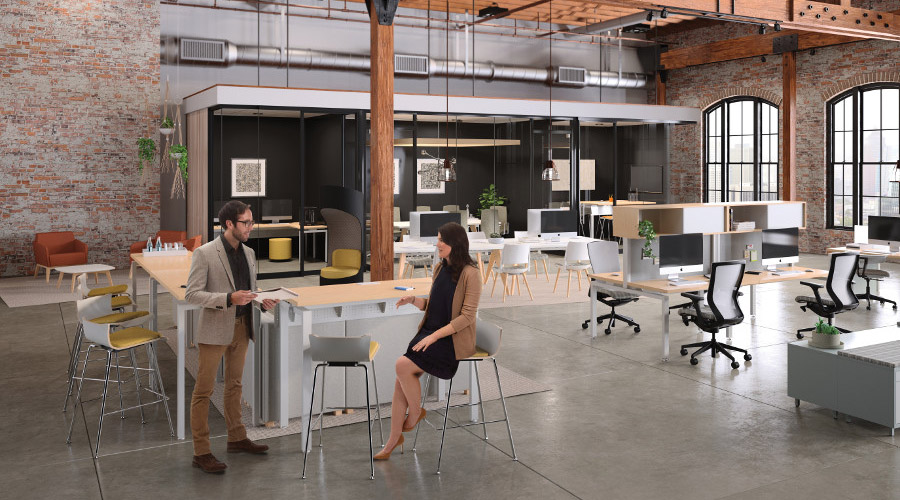Work/life balance is a major cultural element in today’s high-tech, fast-growth companies where employers are trying to find ways to promote flexibility and provide amenities that can help people juggle both more effectively.
In the past, the work/life trend has been one defined in large part by the trend of large companies moving to suburban locations in an effort to get more real estate at lower costs. As suburban campuses fought the inconvenience of their distance from the amenities of urban centers, they began providing on-campus amenities to incentivize employees. Things like food, laundry, restaurants, entertainment, and even supplementing local efforts to develop housing convenient for their employees.
However, the 80 million–member millennial generation prefers the denser urban lifestyle over the ‘burbs. No commute means a positive impact on a healthy work/life balance, and the opportunity for a live-work-play environment is appealing to today’s young professionals.
One solution? The trend toward the reurbanization of cities, particularly in places where companies strive to accommodate young tech employees. Both employees and employers are now relocating from distant suburbs to urban centers as many companies put a focus back into downtown areas.
This quest for balance and the back-to-the-city trend was certainly reflected in the significant tech-industry movement on the west coast where the story of reurbanization is now heavily driving San Francisco real estate. The city has been the dominant hub in American tech since technology became its own industry, and it has now become even more so.
For instance, in 1990, less than 1% of San Francisco’s population worked in the technology field. Now, San Francisco hosts more than 14,000 start-ups, is home to names such as Twitter, Uber, Zynga, and Spotify; and has welcomed the move of companies like LinkedIn and Pinterest from their original Silicon Valley homes.
When LinkedIn opened its new San Francisco offices in March of 2016, spokeswoman Nicole Leverich said an advantage of the new location is, “Its proximity to where many LinkedIn workers live. [It also] helps the company recruit folks who may not want to make the hour-plus commute to the company’s Mountain View headquarters.”
She sums up what a lot of tech companies are facing across the U.S., and many other types of companies globally. Millennials want to live closer to work and start-ups are taking the cue as they look to their recruiting future.
With costs skyrocketing in popular hubs such as San Francisco, New York City, Seattle, and Washington D.C., one future trend we see is startups moving to emerging tech hubs with lower costs of living like Chicago, Austin, Atlanta, Boston, Raleigh-Durham, and cities in Colorado and Utah.
We’ve discussed the work/life balance implications for real estate but what does this shift mean for workplace design? While the amenities of suburban campuses largely remain intact, tech companies are looking to be as agile as possible when planning office space and specifying furniture solutions.
Incorporating workplace wellness, integrating technology and accounting for work/life balance (the top three priorities identified by tech employees) can be daunting. While location plays a vital role, furniture and environments need to reinforce company objectives when attracting and retaining tech employees. Ideas include:
- Investing in spaces and furniture solutions that promote Active Design (click here to view KI’s nine principles for implementing active design)
- Create open, flexible spaces that accommodate a variety of work styles and employee needs
- Use architectural wall solutions that provide natural light/daylighting
- Design spaces to encourage face-to-face meetings and more interaction
- Allocate outdoor workspaces for employees
- Providing work areas that are seamlessly integrated with the latest technology. Check out this previous blog post for additional details.
- Designing for multiple generations. Baby boomers may work somewhat differently than Millennials but in the end their priorities are the same. Environments should address every employee’s general work style preferences.
If you’d like to learn more about what’s driving tech culture, I encourage you to contact us to schedule our CEU, “Emerging Space: How the Technology Industry is Driving Workplace Change."




